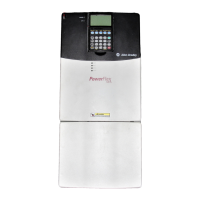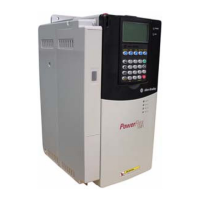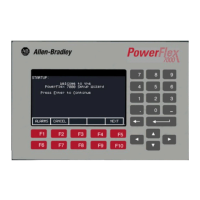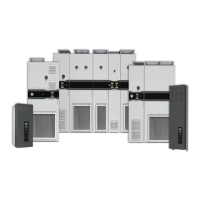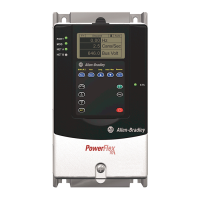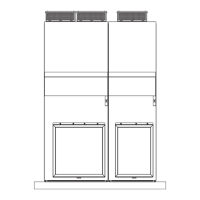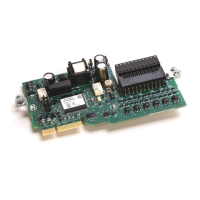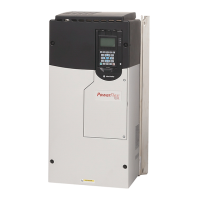88 Rockwell Automation Publication 20C-PM001F-EN-P - March 2012
Appendix B Application Notes
Motor Control Technology
Within the PowerFlex family there are several motor control technologies:
• To r q u e P r o d u c e r s
• Torque Controllers
• Speed Regulators
Torque Producers
Volts/Hertz
This technology follows a specific pattern of voltage and frequency output to the
motor, regardless of the motor being used. The shape of the V/Hz curve can be
controlled a limited amount, but once the shape is determined, the drive output
is fixed to those values. Given the fixed values, each motor will react based on its
own speed/torque characteristics.
This technology is good for basic centrifugal fan/pump operation and for most
multi-motor applications. Torque production is generally good.
Sensorless Vector
This technology combines the basic Volts/Hertz concept with known motor
parameters such as Rated FLA, HP, Voltage, stator resistance and flux producing
current. Knowledge of the individual motor attached to the drive allows the drive
to adjust the output pattern to the motor and load conditions. By identifying
motor parameters, the drive can maximize the torque produced in the motor and
extend the speed range at which that torque can be produced.
This technology is excellent for applications that require a wider speed range and
applications that need maximum possible torque for breakaway, acceleration or
overload. Centrifuges, extruders, conveyors and others are candidates.
Speed Regulators
Any of the PowerFlex drives, regardless of their motor control technology (Volts/
Hz, Sensorless Vector or Vector) can be set up to regulate speed. Speed regulation
and torque regulation must be separated to understand drive operation.
The PowerFlex 70/700 with Standard Control and the PowerFlex 700H can be
programmed to regulate speed using the slip compensation feature. Slip
compensation reacts to load changes by adjusting the drive output frequency to
maintain motor speed
. Torque production operates independently. This feature
produces speed regulation of about 0.5% of base speed over a specified speed
range (40:1 for V/Hz and 80:1 for Sensorless Vector). These drives do not have
the capability to extend the speed range or tighten the speed regulation below
0.5% because they do not have connections for a feedback device.
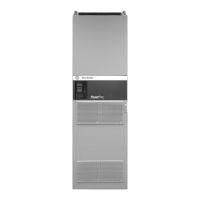
